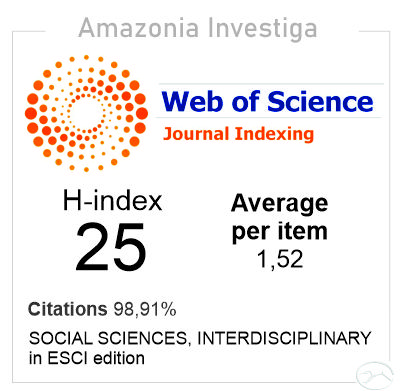Effect of loading due to building construction on liquefaction potential of sand deposits
Mots-clés :
Liquefaction, FLAC, loading, geotechnical engineering, finite difference methodRésumé
Liquefaction is one of the most important seismic geotechnical titles and mainly occurs in the nondense saturated sandy soils during the dynamic loading such as earthquake. The construction of structures on the sand deposits susceptible to liquefaction may prevent liquefaction from occurring or increase the potential and severity of liquefaction. In this study, the FLAC2D software was used for modeling. The liquefaction of the sandy soil mass was studied in three cases: (1) without loading, (2) loading due to the construction of 10- and 20-story buildings, and (3) loading due to the construction of 10-, 15- and 20-story buildings. The results show that by increasing the number of building floors, and consequently, increasing the applied load, the effective depth was increased due to the increase in the amount of effective stress that could decrease the liquefaction potential.
Téléchargements
Références
Adaliera, K., Elgamalb, A., Menesesb, J., Baezc, J.I. (2003). “Stone columns as liquefaction countermeasure in non-plastic silty soils”, Soil Dynamics and Earthquake Engineering. 23 (7): 571–584
Almani Z. A., Ansari, K. and Memon, A. (2012). Mechanism of Liquefaction-Induced Large Settlements of Buildings. Mehran University Research Journal of Engineering & Technology. 30 (4): 635-650.
Byrne P.A. (1991). Cyclic shear-volume coupling and p ore-pressure mo del for sand. In: Second International Conference on Recent Advances in Geotechnical Earthquake Engineering and Soil Dynamics, Louis, MO, USA. 1.24: 47–55.
FLAC. 2005. Fast Lagrangian Analysis of Continua, Itasca Consulting Group, Inc, Third Edition (FLAC Version 5.0).
Kramer, S.L., Sideras, S.S. and Greenfield M.W. (2016). The timing of liquefaction and its utility in liquefaction hazard evaluation. Soil Dynamics and Earthquake Engineering. 91: 133-146.
Pillai, VS. (1991). Liquefaction analysis of sands: Some interpretation of seed’s K? (sloping Ground) and K? (Depth) Correction factors using steady state concept. In: Proceedings of second international conference on recent advances in geotechnical earthquake engineering and soil dynamics.p.579–87.
Rollins, E. M., Seed, H.B. (1990). Influence of buildings on potential liquefaction damage. Journal of Geotechnical Engineering, ASCE. 116(2):165–85.
Seed, H. B., Tokimatsu, K., Harder, J., L.F., Chung, R.M. (1985). “The Influence of SPT Procedures in Soil Liquefaction Resistance Evaluation”, Journal of Geotechnical Engineering, ASCE. 11(12): 1425-1445.
Shahir, H., Pak, A., Taiebat, M., Jeremi?d, B. (2012) “Evaluation of variation of permeability in liquefiable soil under earthquake loading”, Computers and Geotechnics, 40: 74–88.
Sharifi, J., Kilaneei A., Abbas Nia, A. H. (2015). Case study on effect of load caused by construction of surface structures on liquefaction potential. Second National Conference on Soil Mechanics and Foundation Engineering. Qom Industrial University.

































































.gif)






